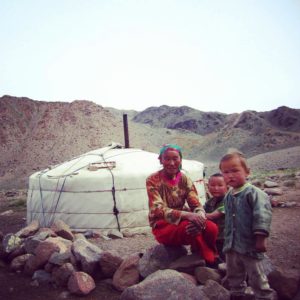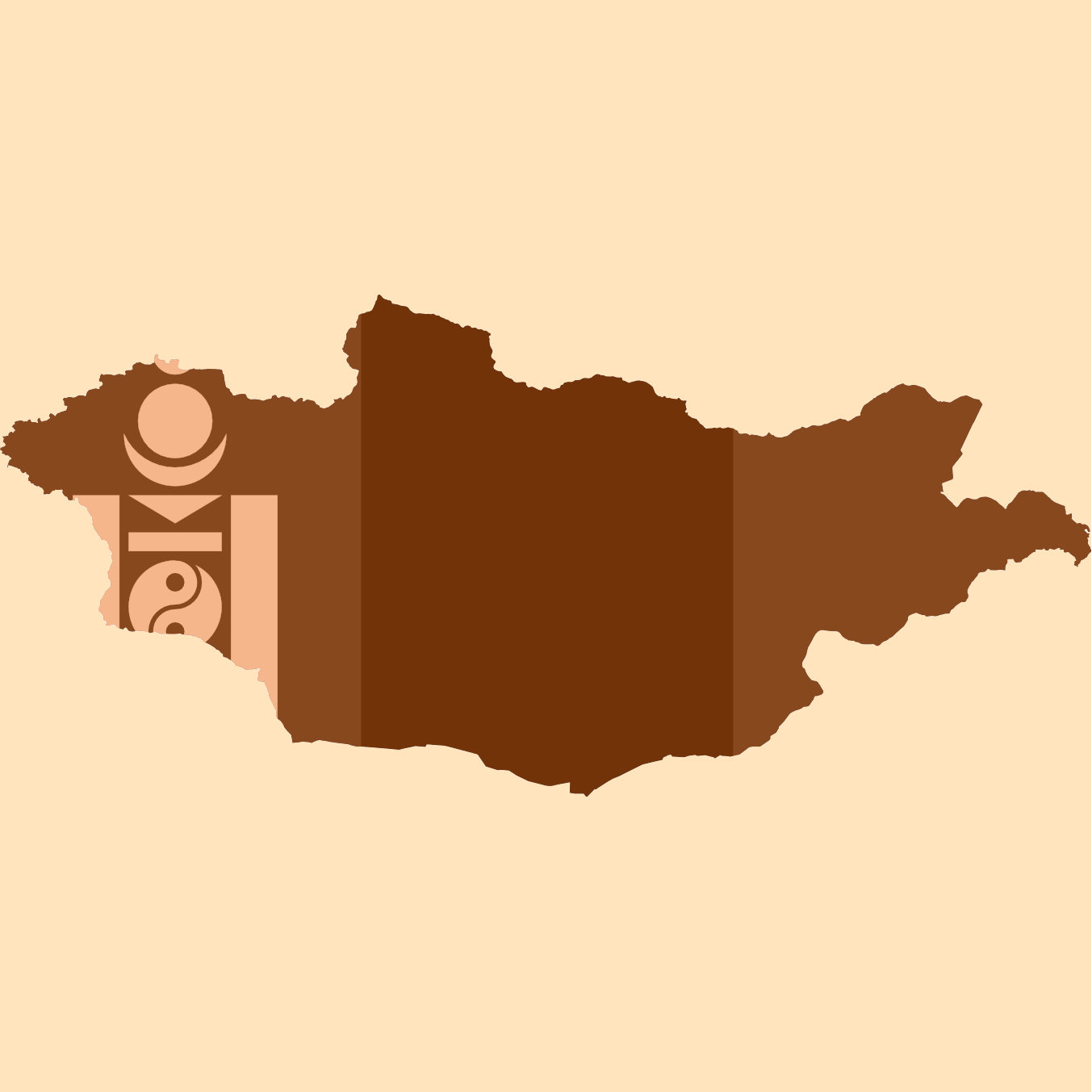This blog is part of our MSc in Migration Studies guest blog series: Viewing Life Through the Migration Lens: experiences and thoughts post-MSc
For many people, the name ‘Mongolia’ conjures images of rolling steppe lands dotted with tiny yurts (or gers) and inhabited by nomads. But the land of Genghis Khan and the eastern Silk Road is changing fast—due in no small part to rapid rural-to-urban migration, fuelled by economic and climatic change.
Mongolia is a landlocked country sandwiched between Russia to the north and China to the south, east and west. Roughly the size of Western Europe, yet with a population of just 3 million people, it is the world’s most sparsely populated independent country. For much of its existence, its inhabitants were pastoral nomads, herding livestock in seasonal cycles between summer and winter pastures.

Photograph by Faraz Shibli
It is difficult to overstate how tightly nomadism is woven into the nation’s history. In the seventeenth century, Mongolia fell under Chinese rule. In the nineteenth century, nomads of Inner Mongolia were unable to prevent the acquisition of their fertile lands by Chinese farmers, exciting passions to push for the liberation of Outer Mongolia (modern day Mongolia). In a fight symbolised by the struggle between Mongolian nomadism and Chinese agrarianism, it gained independence following the collapse of the Qing dynasty in 1911, with support from the Soviet Union.
Following the subsequent installation of a communist regime, nomadism persisted through a system of land management not entirely dissimilar from previous years; under the Qing, herders had been assigned various pastures that they did not own but of which they had a customary right of use, whereas under socialism, the state administered access to land.
Herders did not fare so well, however, after Mongolia’s peaceful, democratic revolution of 1990. After the collapse of the Soviet Union, Mongolia began its transition to a market-based economy and livestock quickly fell almost entirely into private ownership. State support for nomads decreased, including the training of herders and provision of winter feed, and proper land management declined. Nomads increasingly migrated closer to towns and traditional land rights were disregarded, leading to overgrazing and soil degradation.
An abundance of minerals worth trillions of dollars was discovered in the South Gobi region around the turn of the millennium and large-scale mining companies poured into the country. For nomads, the proliferation of mining (including illegal mine sites) has led to reduced grazing opportunities and the death of livestock due to soil pollution caused by the use of mercury and cyanides.
These changes are taking place in an environment that is already extremely fragile. Increasing aridity and wind erosion are leading to greater desertification. In summer, temperatures can soar to 50°C, plunging to –50°C in winter. Mongolia suffers from a natural disaster called dzud, in which a summer drought followed by a harsh winter leads to many animals starving or freezing to death. In recent years, herders have experienced particularly devastating dzuds: from 1999 to 2002, 11 million animals died, whilst from 2009 to 2010, the figure was 8.5 million.[1] Unsurprisingly, the effect on the livelihoods of nomadic families has been catastrophic.
In response to the declining viability of traditional nomadism and a desire to share in the spoils of the economic boom, many herders migrated to urban centres. They often kept in touch with their hometown communities, increasing the likelihood of further rural-to-urban migration through the sharing of information and migration strategies.[2] Whereas almost two-thirds of Mongolia’s population lived in the countryside in 1960, under one-third do so today—with almost half of all Mongolians living in the capital city, Ulaanbaatar.[3][4]
For most internal migrants, however, their escape to the city has not been especially lucrative. In spite of providing a huge boost to the economy, which was the fastest growing in the world in the early 2010s, the mining sector is not job-rich and income distribution has not been as great as many had hoped. Whilst mining accounts for one-fifth of GDP and 90 per cent of exports, a lack of diversification has left Mongolia vulnerable to boom-and-bust cycles of the mineral market and it is now experiencing a serious economic slowdown.[5]
Most rural-to-urban migrants in Ulaanbaatar are unable to afford apartments in the city centre, so they live in its surrounding ger districts: fast-growing, overcrowded slums of shacks and yurts, in which sanitation and basic infrastructure are sorely lacking. Life here is a far cry from that near the Hugo Boss and Louis Vuitton shops of central Ulaanbaatar. Unemployment is over 60 per cent—almost triple that of apartment areas—and social problems are rife, including alcoholism and domestic violence.[6] Without central heating, its residents burn cheap coal to heat their homes throughout the freezing winters; if coal is beyond their budget, they use rubbish, plastic or tyres instead.
This, combined with gridlock on the roads and emissions from coal-fired power plants, has led to winter months punctuated by thick, black clouds of smog that block out the mountains surrounding the capital. Pollution levels reached five times those in Beijing in December 2016, exceeding the level deemed safe by the World Health Organization by a factor of 80.[7] Respiratory illnesses are on the rise and experts have drawn ‘alarmingly strong’ correlations between seasonal pollution and the rate of miscarriages.[8] Although there is still a lack of education as to the effects of the smog, people have finally begun to take action, with demonstrations being organised outside parliament.
There have been various attempts to reduce pollution in the city since 2000, including those backed by large grants from international donors; nonetheless, pollution levels have not been much reduced. The latest initiative, decreed by the mayor in January 2017, might perhaps prove to be the most controversial: a ban on migration from the countryside to Ulaanbaatar until 2018 (except for people in need of long-term medical treatment and those who have bought apartments). This is no small measure in a nation whose constitution guarantees citizens the right to choose where to live; one that places itself in the tourism world as a nomadic land without fences.
The ban raises a number of important questions. What other options are there for impoverished herders, especially those who suffer from the effects of dzud? How will it actually be enforced given Mongolia’s relative lack of infrastructure? How might it affect herders who try to relocate to the capital anyway? Will it increase the likelihood of them being stuck in unemployment or informal, low-wage work? Could this, in turn, increase reliance on poor-quality coal and in fact worsen air pollution?
Mongolia has previously struggled to cope with the challenges of economic and climate-based urbanisation. A sustainable solution that protects the lives and livelihoods of both rural and urban dwellers is desperately needed. This will require both significant investment in providing greater support to herders, particularly during harsh winters, and extensive development of the ger districts, finally connecting their residents to heating, electricity and proper sanitation.
Faraz Shibli is an MSc Migration Studies alumnus. He is an international development lawyer and travel writer who has been visiting Mongolia since 2011.
Citations
[1] Reinikainen, P (2013) ‘Mongolia: extreme cold forces families from traditional living to urban slums’ International Federation of Red Cross and Red Crescent Societies
[2] Bilegsaikhan, S (2015) ‘How is climate change affecting rural-urban migration in Mongolia?’ TransRe
[3] World Bank (2015) ‘Rural population (% of total population)’
[4] Norovsambuu, A and Theunissen, T (2013) ‘Mongolia’s Economic Boom’ The Diplomat
[5] Gerelchimeg, Ts (2015) ‘Coping with Global market commodity Price Fluctuations: Impact on Fiscal and Debt Management in case of Mongolia’ Ministry of Finance Mongolia
[6] Lim, L (2009) ‘Widespread Alcohol Abuse Clouds Mongolia's Future’ NPR
[7] Kohn, M (2016) ‘World’s Worst Air Has Mongolians Seeing Red, Planning Action’ Bloomberg
[8] Aghajanian, L (2015) ‘Fighting to breathe in Mongolia’ Al Jazeera America
